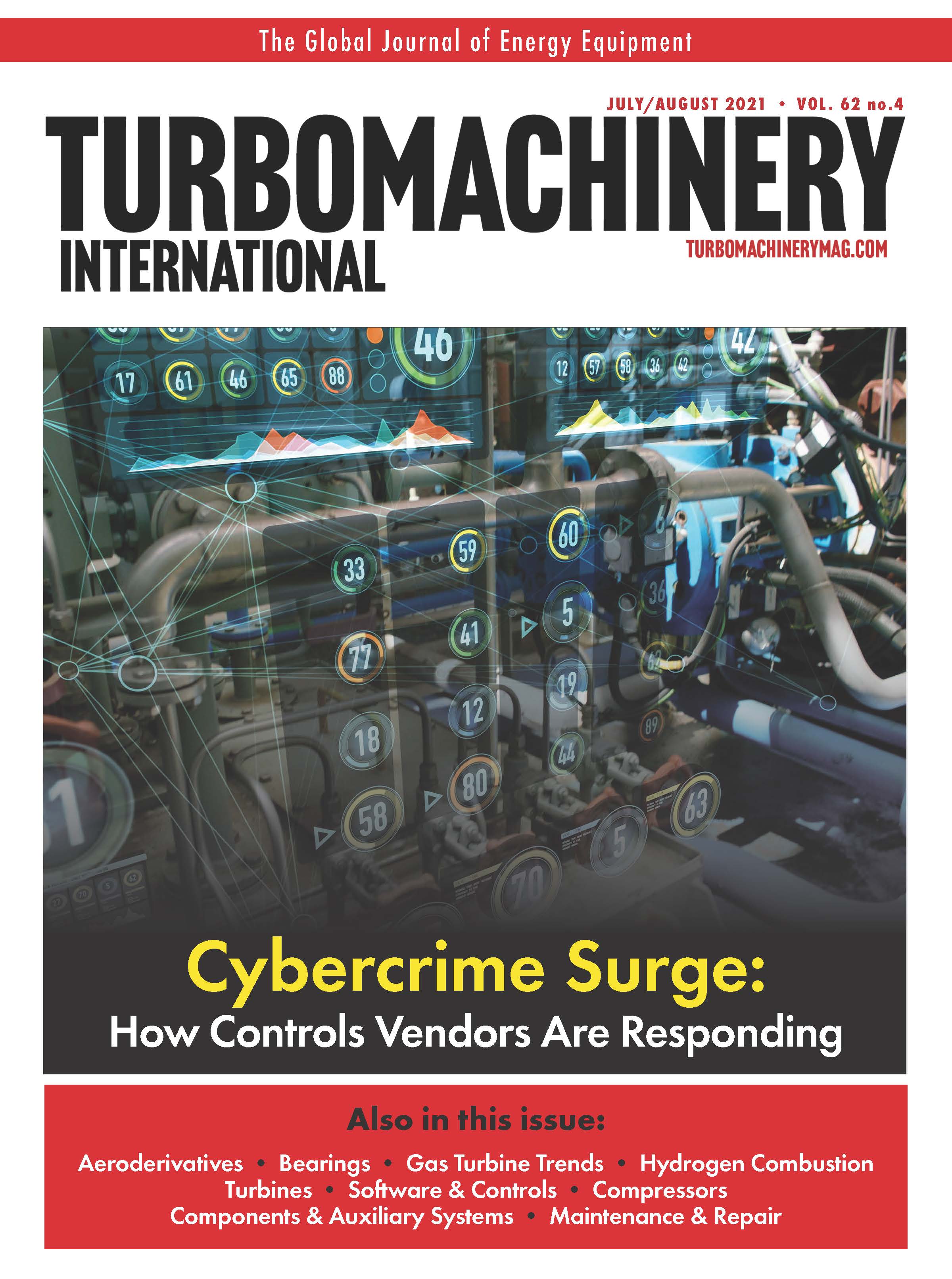Western Turbine users meeting covers everything related to GE aeroderivative operations and maintenance
This year, the Western Turbine Users, Inc. (WTUI) conference took place virtually over the course of several weeks. This article summarizes week one.
A reminder of the days of in-person shows - WTUI 2019

The Western Turbine Users, Inc. (WTUI) conference took place virtually this year. Instead of everything packed into a few days, the organizers decided to stagger it over several weeks. Hence this article only summarizes the first week.
John Hutson, WTUI President and Plant Manager at NAES Orange Grove Energy, welcomed everyone and provided an overview of the conference, which is the largest aeroderivative gas turbine user group in the world. The goal is to share information and best practices with fellow users to produce better operational outcomes for GE LM series turbines, he said.
He introduced the various session chairs for each turbine series. Dave Fink, I&C Technician for Onward Energy, Fountain Valley Power, headed up the LM6000 forum. Steve Worthington, Plant Manager, Arizona Public Service, Ocotillo Power Plant, was in charge of LMS100 sessions. Garry Grimwade, Utilities Generation Technician, Riverside Public Utilities, covered the end-of-lifed LM2500, and Perry Leslie, Plant Technician at Wellhead was responsible for the LM5000.
In subsequent days, attendees split up based on the engines they care for in their own plants. The conference tracks dedicated to each engine consisted of discussion groups, vendor presentations, and in-depth coverage of the various issues and remedies impacting their respective machines. This included meticulous coverage of Technical Bulletins from the OEM, as well as closed-door user-only meeting where they could voice their concerns, share remedies, and educate others on best practices.
To kick things off on day one, conference veteran Andrew Gundershaug, Plant Manager at Calpine, provided an LM engine refresher workshop. He oriented the audience on what was on offer at the conference, how to get the most out of it, and how everything is being organized. He also provided a description of the LM engines, defined the various components and systems, explained how they worked, and laid out the many acronyms being used at the show.
Authorized Service Providers (ASPs)
WTUI has forged strong relationships with the authorized service shops for aeroderivative turbines. Each year, they get to showcase their facilities and lead user sessions where they go over common problems and solutions for certain engines.
For example, MTU Power’s Vice President of industrial Gas Turbine Sales Greg Stoecker, presented on behalf of his company. Despite ongoing COVID-19 pandemic challenges, he said his company saw around 25% growth in its industrial gas turbine and package business in 2020. MTU Power has been expanding its yearly capacity for LM engines and has just introduced hot section repairs for the newest LM variant, the LM6000PF+. TCT, ANZGT, and IHI provided similar briefings. The first day ended with a briefing by GE.
Fleet Performance
Over the following weeks, the LM turbine leaders took their users through many hours of specialized coverage. Each track featured a breakdown by Tom Christiansen, Senior Vice President at Strategic Power Systems (SPS), on findings from the company’s ORAP system.
The Operational Reliability Analysis Program (ORAP) captures data from global operating power plants (gas, steam, wind, and solar) as well as reciprocating engines. It contains detailed, reliability performance data that allows users to compare their performance against relevant peer groups and identify differences and opportunities for improvement. This is achieved by gathering metrics from a great many operating power plants around the world. SPS offers contributing members access there a secure, cloud-based business intelligence portal.
Christiansen took the LM6000 users through a rundown of the top causes of forced outages presenter, ORAP gathers data from 276 LM6000 users, representing 27% of the worldwide fleet.
The availability the turbine in simple cycle plants is more than 96%. The overall engine package has a slightly lower availability (94%). Over the past few years, the availability level has been improving.
Drilling down into forced outage incidents, ORAP findings show the primary areas of problems and incidents in the LM6000. 25% come from balance of plant (BOP) issues, 28% from the aeroderivative engine itself, 37% from controls and accessories, and 10% from driven equipment. When studies based on outage hours rather than volume of outage incidents, the numbers are: BOP 28%, aero engine 38%, driven equipment 15%, and controls and accessories 19%.
Christiansen then broke things down further. Combustion issues was the top reason for forced outage incidents with 148 reported in 2020, well up from 2019. He said that the detection of high CO or NOx emissions were the main cause for these outages, followed by issues related to non-optimum fuel flow, flameouts, failures to ignite, and acoustic issues.
“The higher quantity of outage hours noted compared to the previous year was due to two specific sites where the combustor suffered damaged and had to be replaced – the plant didn’t have a replacement on site.
After combustion issues in the top ten came lube oil pressure issues traced mainly to faulty switches. Other causes noted by SPS were low oil pressure incidents, filter pressure issues, and problems with the pressure relief valve, pressure sensor, and pressure transmitter.
The number three contributor to forced outages per ORAP was gas fuel control/shut off valve issues. These were traced primarily to calibration, driver, valve cinching, or actuator problems.
Christiansen laid out the rest of the top ten for the LM6000. In subsequent days, he provided a similar analysis of the reasons for forced outages in the other GE LM machines.
Next year’s WTUI conference will be held in Long Beach, California in late March, 27-30, 2022. Conference registration opens January 1, 2022. For more information, visit www.WTUI.com.

2 Commerce Drive
Cranbury, NJ 08512
All rights reserved.